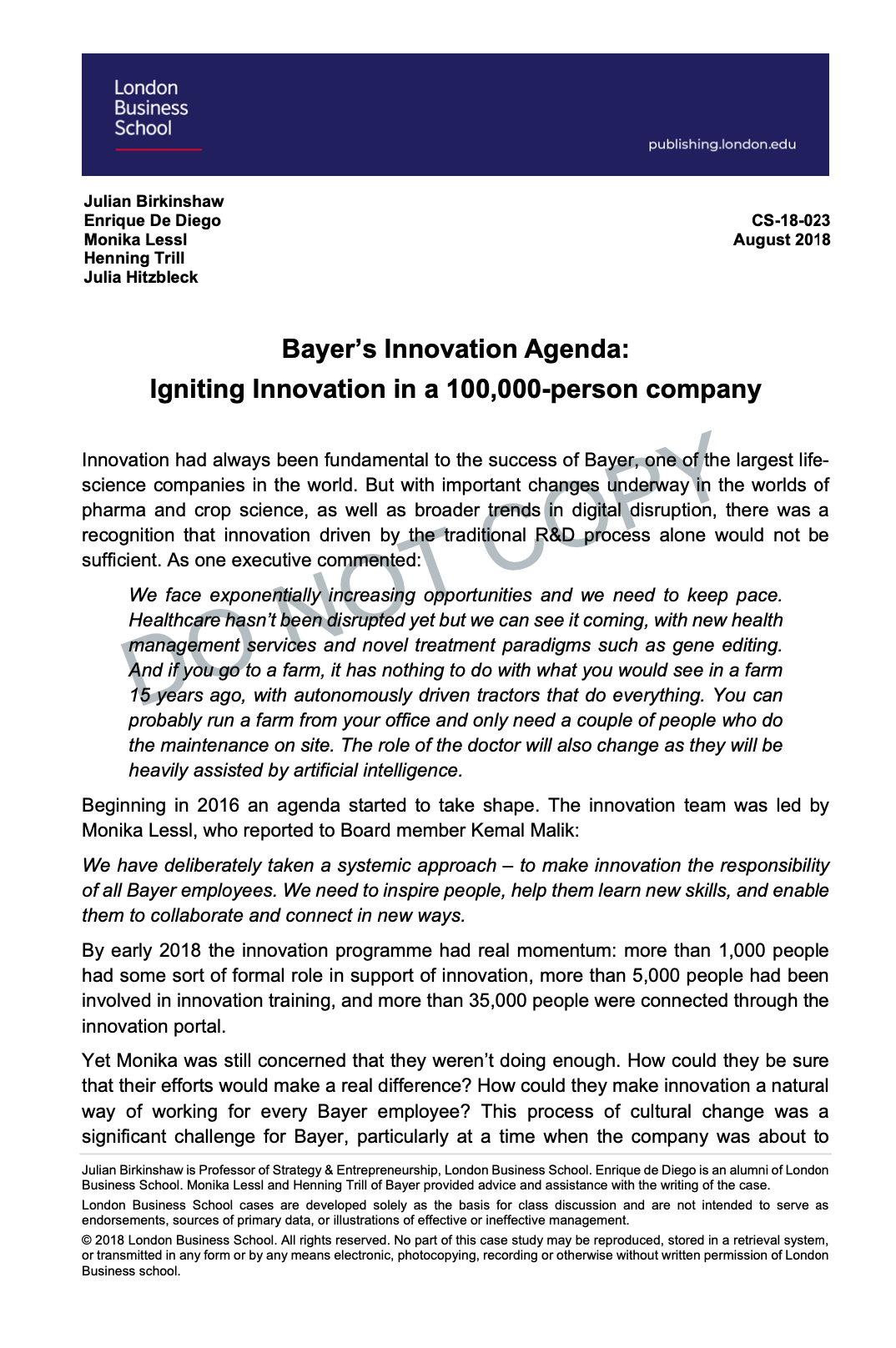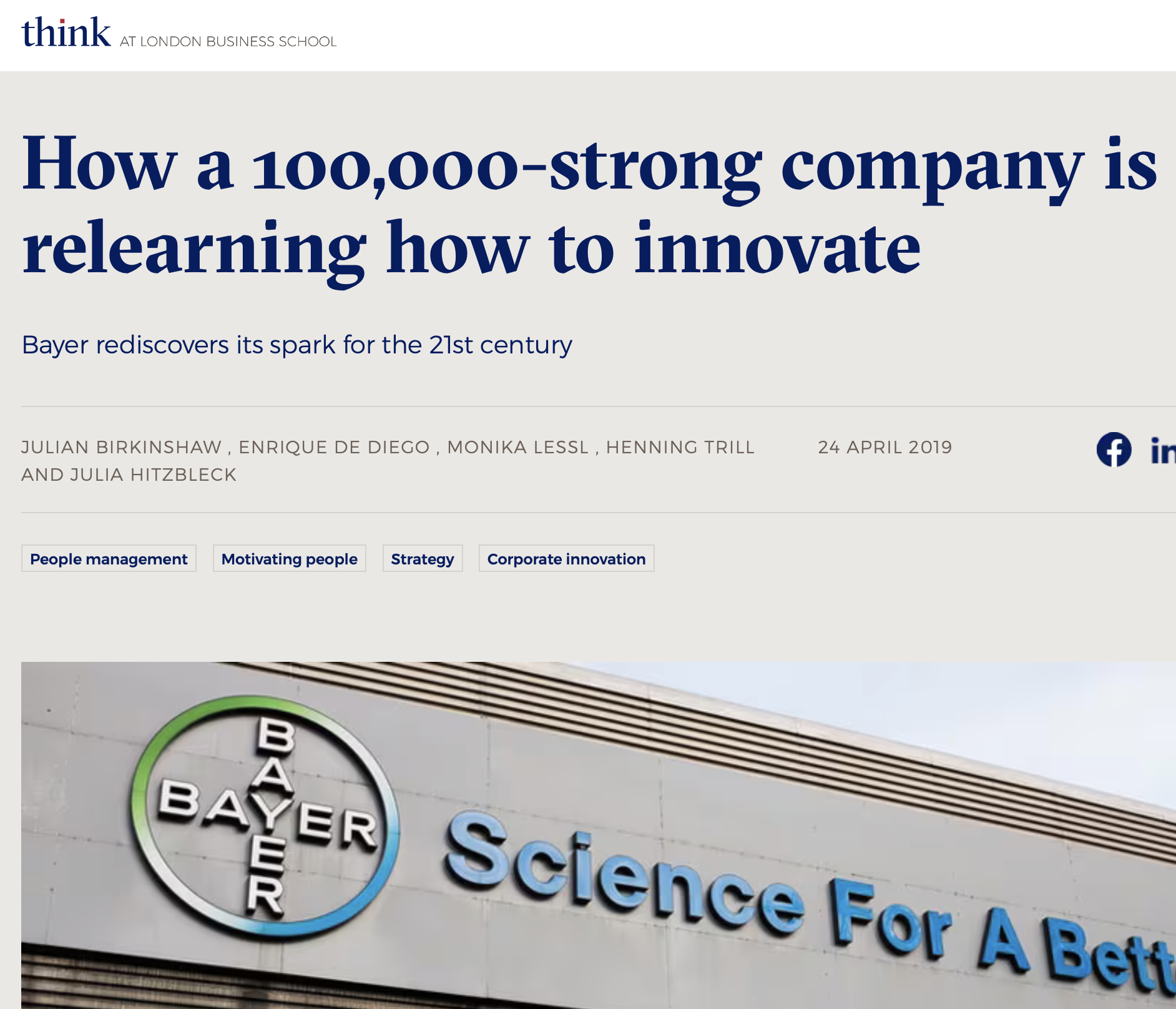The case describes how Bayer, one of the oldest and largest life-science companies in the world, recognised that innovation driven solely by the traditional R&D process that characterised the sector would not be sufficient to remain competitive, given the major changes underway in pharma and crop science and the broader trends in digital disruption.This recognition came from the very top, CEO Marijn Dekkers, who took the decision in 2015 to instigate a major corporate restructuring: Bayer would focus on its core life-science businesses (pharmaceuticals, consumer health and crop science) and spin off its material science business as a completely separate company.Beginning in 2016 under Board member Kemal Malik, Bayer began to put an innovation strategy in place that deliberately sought a systemic approach, meaning company-wide, to make innovation the responsibility of all Bayer employees. The question then arose how to put this vision into effect. How could Bayer promote greater innovation throughout the company, given that it had more than 100,000 employees spread over 75 countries? What actual initiatives could be undertaken to make innovation more effective and impactful? The case details how Monika Lessl, who reported directly to Malik, put in place a cross-divisional and cross-functional team to identify the most important areas to tackle and how, by 2018, the innovation programme she oversaw had “real momentum”, with more than 1,000 people having some sort of formal role in support of innovation, more than 5,000 involved in innovation training, and more than 35,000 connected through the company’s innovation portal.


